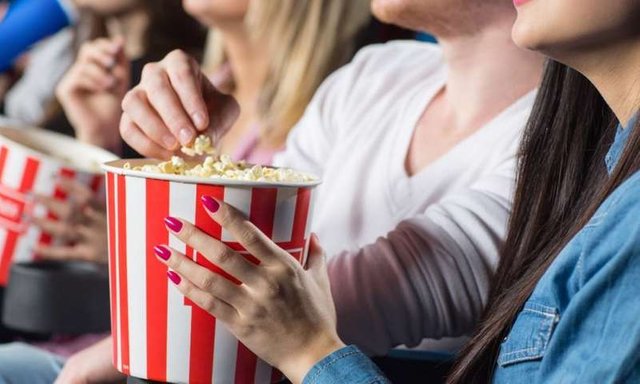New technology will help blind people 'see' at the cinema

Sight loss affects around two million people in the UK, a number that is likely to increase to four million by 2050.
Losing sight can of course change many areas of a person's life – even seemingly insignificant things like being able to watch a good film or a new programme on television. A recent survey of over 100 visually impaired people found that 34% hadn't attended the cinema in the last 12 months. For sighted people this figure was found to be much lower at only six per cent.
A lot of this is down to the fact that going to the cinema when you are visually impaired can be challenging. Audio description (AD) is often relied on by blind and partially sighted people – this is like a narrator telling a story and explaining the visual content of the film. Around 40% of the cinemas in the UK now include AD services. But these aren't always available for use, either because of faulty equipment, cinema staff not knowing how to operate it, or issues with the headphones required for AD interfering with hearing aids.
One visually impaired person I spoke to explained how every time she tried to attend her local cinema, staff were unable to operate the equipment or the equipment was faulty. The cinema would then give her free vouchers for another film at another time, but upon her return, the same thing would happen. She now has a collection of vouchers she cannot use.
Frustrated film fans
The UK has been at the forefront of developments in AD and in 2003 the goverment's Communications Act dictated that broadcasters had to ensure ten per cent of their programming had AD. The BBC, Channel 4, ITV and Sky committed to including AD in at least 20% of their content.
But although there has been an increase in AD on both broadcast and on-demand services, the latter is still lagging behind. This is in part why the Royal National Institute of Blind People (RNIB) in partnership with MovieReading have developed an app designed to overcome some of these limitations. The app allows users to download an AD track for a programme or film, and this then synchronises automatically to the original content.
But another issue with the AD track is that it is often written and recorded by an AD provider. These tend to be external to the filmmaking crew – meaning it's a system outside the creative workflows of film and television, and so doesn't always align. Consequently, it's not hard to see why so many blind and partially sighted people feel frustrated and give up on going to the cinema.
Ears for eyes
This is why my colleague and I started the enhancing audio description project to deal with these issues.The project aims to create an accessible soundtrack that is crafted in the production and postproduction stages of film and television.
This means that instead of having an external company creating a verbal commentary, film teams can work on creating an accessible version that follows the "vision" of the filmmakers. This ultimately helps to make the film engaging to everyone, regardless of their sight condition.
Additional sound effects can also be added to help clarify moments where, for example, the scene might be dominated by music. We are also exploring the use of "spatial audio" through loudspeakers and headphones to give visually impaired audiences more information. This could include things like where the characters are standing, where they are heading to and what objects are in the room. This is based on our research on audio spatialisation which showed that separating the position of the character's voices allows visually impaired audiences to differentiate characters more easily, without the need for verbal descriptions.
We are also working on the idea of a first person narrator. This would see one of the characters in the story describing elements that would be impossible to convey through sound effects and spatialisation – such as colours and gestures.
All ears
When Harry Potter and the Philosopher's Stone was released in 2002, it was the first film screened in the UK using a system that ensured the synchronisation of the AD track to the film.
This was a great advancement in the field of AD in relation to its transmission. But since then, not enough has changed to enhance the cultural experiences of visually impaired people. But it is hoped that with the use of this new technology, going to the cinema can soon be something that can be enjoyed by everyone.
Thanks,
Congratulations @suvo11! You have completed some achievement on Steemit and have been rewarded with new badge(s) :
Click on any badge to view your own Board of Honor on SteemitBoard.
For more information about SteemitBoard, click here
If you no longer want to receive notifications, reply to this comment with the word
STOPNice!
nice post
bro ami apnar post a like comment dichi
apni o amar post a like comment den pliz
https://steemit.com/@monirol-islam